Chicago “Hard-Tech” Tackles Global Warming
By Robert J. Kriss, C2ST Editor
In a notable line from the 1967 movie, “The Graduate,” a savvy businessman takes a recent college graduate played by Dustin Hoffman into a quiet room at a party to give him a hot tip for his future. The businessman says he has a single word for the graduate — “plastics.” Today, the word might be “batteries.”
The Challenge
Electric vehicles currently have shorter range than gas-powered vehicles and take hours rather than minutes to “refuel.” Solar cells and wind or water turbines can generate substantial amounts of energy, but what do we do at night and on calm or cloudy days?
Currently, there is no type of battery that can power a small city through the night or during calm or cloudy days. Power plants using fossil fuels or nuclear energy are still necessary to provide sufficient amounts of reliable energy day and night. Battery technology must improve if we want to reduce the number of smoke stacks.
Chicago “Hard-Tech” and the Batteries of the Future
“High-Tech” is a term often associated with the coasts and consumer devices and apps. But Chicago, with its world-class universities, national laboratories, and its many science and engineering-based businesses, is a leading center for what some people are calling “Hard-Tech” – solving hard technological problems to manufacture things that have the potential to change the world. Battery technology is a prime example of Chicago Hard-Tech.
Argonne National Laboratory
People
Argonne National Laboratory in Lemont, Illinois, about 25 miles west of Chicago, is a major hub for battery development. It is home to the Joint Center for Energy Storage Research (JCESR), a Department of Energy Innovation Hub comprised of 150 researchers across 18 institutions, led by Dr. George Crabtree, Dr. Venkat Srinivasan, and Dr. Khalil Amine, three internationally recognized experts in battery technology.
Dr. John Goodenough, who was awarded a Nobel prize in 2019 for his contribution to lithium battery development, is a member of JCESR’s advisory board. Dr. Michael Thackeray was instrumental in starting the Argonne lithium-ion battery research group in the mid 1990s. Previously, he had worked with Dr. Goodenough on the award-winning battery research. Dr. Thackeray continues to consult to Argonne. Dr. Srinivasan and his team provided much of the information for this article.
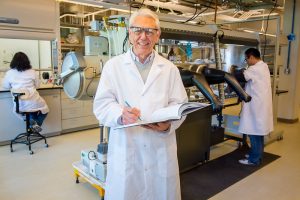
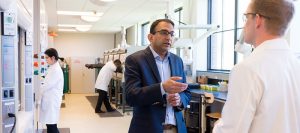
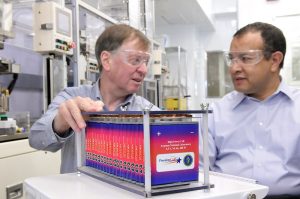
Research Tools
Argonne is the home of two critically important research tools that are used to solve a wide variety of “hard” technology problems — the Advanced Photon Source (“APS”) and the “Mira” and “Theta” supercomputers. When it began operation several years ago, Mira was the third most powerful computer in the world. In 2021, Argonne will become home to the Aurora system, which will be the most powerful computer built in the United States. Enhancements to Argonne’s current computer have made it the most powerful artificial intelligence computer in existence.
Battery development is about material science. The molecular structures of the materials used in a battery affect how much electricity it can hold, how powerful an electrical force it can discharge, how quickly it can be recharged, how long it can last, and how safe it is to use.
Batteries used for different purposes will utilize different materials to produce the desired performance. For example, to power an electric vehicle, batteries must be capable of generating short bursts of power to accelerate the vehicle. However, the materials used to generate the burst of power may not hold enough electrons to power homes through the night. Another combination of materials may not be able to generate short bursts of power but may be able to supply a steady flow of electricity to homes for longer periods of time.
So how do researchers utilize Argonne’s APS and supercomputer to solve these material science problems?
APS
The APS is a tool that can reveal the molecular structure of materials. The APS covers 80 acres, cost more than $850 million (1996 dollars) to build, and took six years from groundbreaking to dedication. It is a large circular structure that accelerates electrons nearly to the speed of light. The accelerated electrons produce x-rays that can penetrate the surface of materials and show molecular structure down to the atomic level and chemical reactions as they occur.
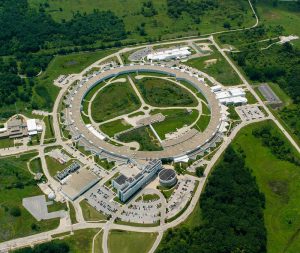
Without the APS, battery research is limited to what Dr. Srinivasan described as the “look and cook” approach. Scientists “look” at scientific literature concerning the chemical characteristics of materials, make informed judgments as to combinations of materials that might work, make batteries with those materials (“cook”) and spend weeks, months, or years testing the batteries to see how well they perform. After they learn the test results, the scientists still will have only a limited understanding as to why the “recipe” worked well or poorly. Then, it is back to “looking and cooking” to find better combinations of materials.
However, with the APS, researchers can see the molecular structure of the materials and begin to understand which structural features affect which performance characteristics of the battery. By examining the structure of a relatively small number of materials and their performance in batteries, scientists can build mathematical models that extrapolate from the test data and predict how other materials with different structures will perform. As a result, scientists can do less “looking and cooking” and, instead, can focus their attention on the materials that most likely will work best for various purposes. The information also can guide scientists in designing new compounds that will work better than those previously identified.
Supercomputer
Supercomputers can further help increase efficiency. The mathematical models developed using the APS can be incorporated in computer programs, and the computer can run thousands of “virtual experiments” on thousands of previously identified and potentially new materials to determine which materials and combinations might produce various desired battery performance characteristics. If the number of virtual experiments were done manually, the work would take decades or centuries, rather than hours or days with the computer. Materials identified during this process can then be used to make batteries (“cooking” again) to see if they perform as well as the computer program predicted.
In addition, although researchers can collect massive amounts of data regarding a host of structural variables, as a practical matter, the researchers can focus only on a relatively small number of variables if they are doing the analysis manually. But by using artificial intelligence and machine-learning computer programs, the researchers can analyze the avalanche of data and potentially find important correlations between structural variables and battery performance that they otherwise would have missed.
A tremendous amount of supercomputing power is necessary to sift through and analyze the large amount of potentially relevant data. Argonne’s past and future supercomputers can perform hundreds of millions of calculations per second and are up to the task.
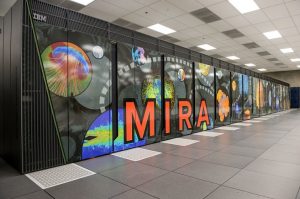
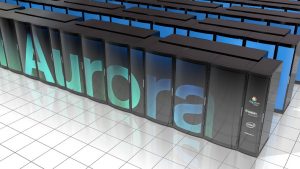
Partnerships
The APS and supercomputers are very expensive to build and operate. It would not make sense for individual companies to build their own. Instead, researchers from universities, established companies, and start-ups from all over the world arrange to use Argonne’s facilities.
In addition, among other things, scientists at Argonne and universities perform basic research that may take years and may or may not result in a breakthrough. Most companies do not want to commit the time and money to performing this high-risk basic research. However, when Argonne or universities discover a breakthrough, they typically obtain a patent and license the use of the technology to private enterprise for a fee. Industry further develops the technology and figures out how to make and sell the products. For example, the technology that powered the first Chevy hybrid vehicle, the Volt, was patented by Argonne scientists and was commercialized by General Motors.
Argonne scientists also actively work with researchers from private industry. For example, Argonne currently is working with the Advanced Lead Acid Battery Consortium, a group of 14 companies that produce, among other things, the lead batteries that start gas-powered vehicles. One of the goals of the collaboration is to develop new versions of lead batteries that can store electricity generated by public utilities and homeowners using solar cells and wind turbines.
Over the past three decades, the Chicago-area, anchored by Argonne, has been a leading driver of battery technology innovation. Chicago Hard-Tech has made a difference and will continue to do so in the years ahead. The effort should be a “win-win” for jobs, the economy, and the environment. Developing new, industrial-strength batteries to store sustainable energy will generate jobs for researchers and factory workers making the batteries, will ultimately lower the cost of energy, and will reduce global warming.